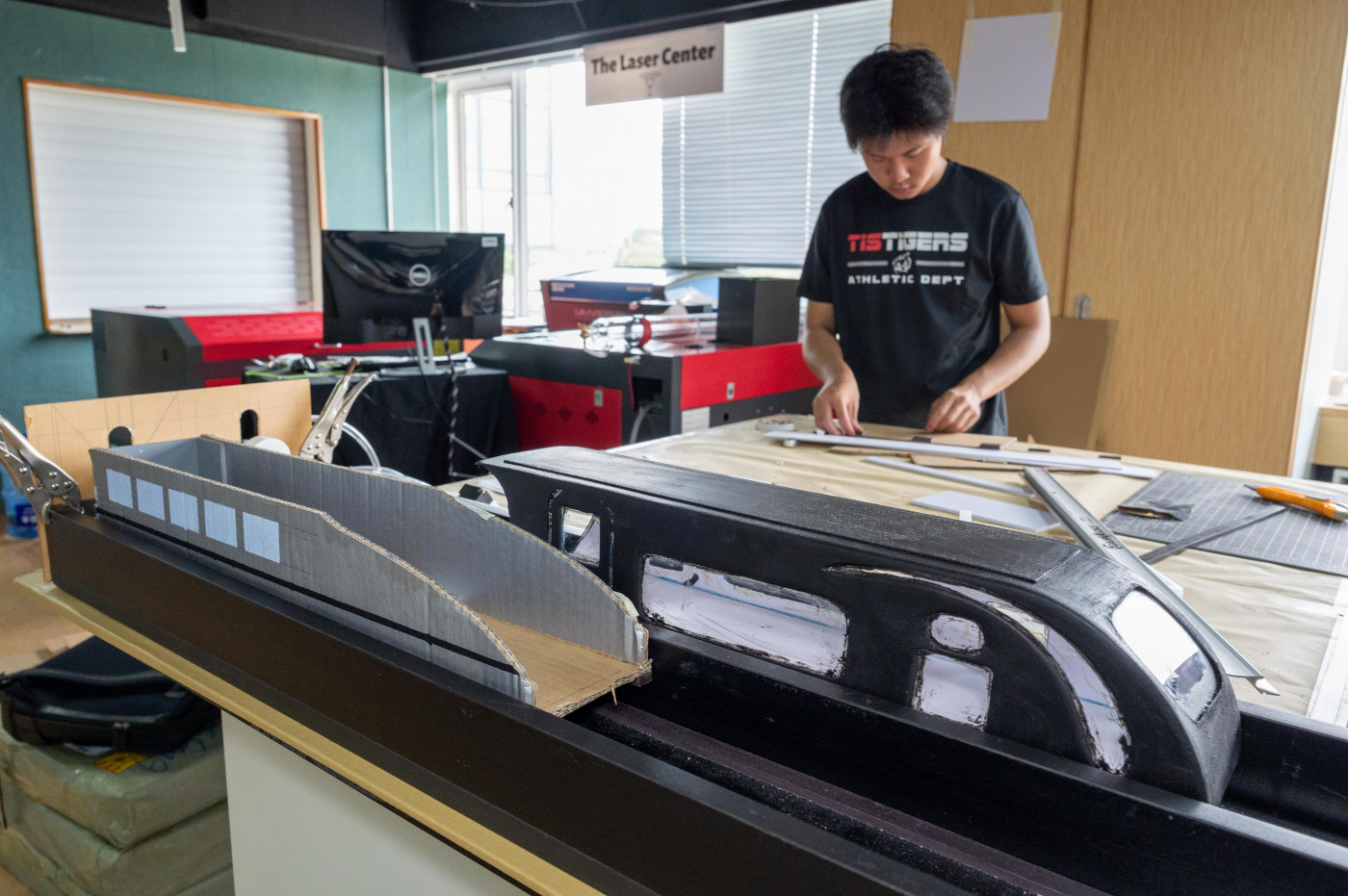
The Power of Magnets: Students build Maglev
While the title of this article may sound like the next Jason Statham blockbuster, it would in reality be closer to the sci-fi genre, where you’d go back to the future in a plutonium-fuelled car/time-machine and slide on hoverboards while wearing funny hats. Some movies can make you feel you need a degree in quantum physics to follow, and perhaps they are partly to blame for science and technology's intimidating reputation.
Yes, science and technology can be intimidating, especially when it comes to complex concepts and theories, like physics and superconductivity. But fortunately, there are creative ways to make these topics more accessible and engaging, and turn complicated technical principles into fun and interactive hands-on projects: by bringing our students' learning - from the classroom - to life, at the Innovation Lab.
Can you imagine a train without wheels?
As part of their Physics unit, grade 10 students are building a Maglev - for Science! Derived from the words magnetic and levitation, a maglev is a train that floats in a magnetic track. How much weight can you add to the train? What speed is it capable of hitting? What are the distances it can travel? It was time to hit the Innovation Lab to find out.




To answer some of these questions and more, students were ready to engage in a hands-on, problem-solving, engineering project, and design a maglev along with building the entire infrastructure, using materials such as cardboard boxes, foam board, glue guns and a license to build. With the support of "Master Voykin" (dearly coined by TIS alumni who were taught by the Technology Department Head and Teacher in the past), who designed and coordinated this project, the students' task is simple: to create a train within specified dimensions and it must carry a payload and 3 lucky LEGO astronauts passengers, as far down the track as possible. Once they collect all the data, students will perform calculations around the distance, time, force, mass and acceleration to create graphs that will help them explain if their predictions match the actual results from the experiments.






The cross-disciplinary nature of the project allows students to apply their newly acquired knowledge and skills they have learned in Science & Physics class, and see the practical applications of their learning, making it more meaningful and engaging for them. Moreover, the hands-on aspect of the project helps students develop practical skills such as problem-solving, critical thinking, and teamwork. This approach to education not only helps students to master difficult concepts but also prepares them for the real-world challenges they will face in their future careers.









Throughout this process, students are given the confidence to work independently, think critically and solve problems, discuss and work together collaboratively, and remain positive throughout the process, despite not always achieving the desired goals.
Fostering the next generation of innovators and problem solvers
As part of TIS’s holistic approach to empower students to embrace the learning process, by engaging in hands-on activities, students are better able to visualise complex concepts and see practical applications of their learning. Such as exploring the world of science and technology through interactive, engaging projects like building a maglev train, which can go a long way in inspiring a child’s creativity and boosting their interest in STEAM fields. This approach is adopted from the early years to graduating classes, and can make the learning process more engaging, meaningful and enjoyable for TIS students of all ages.



